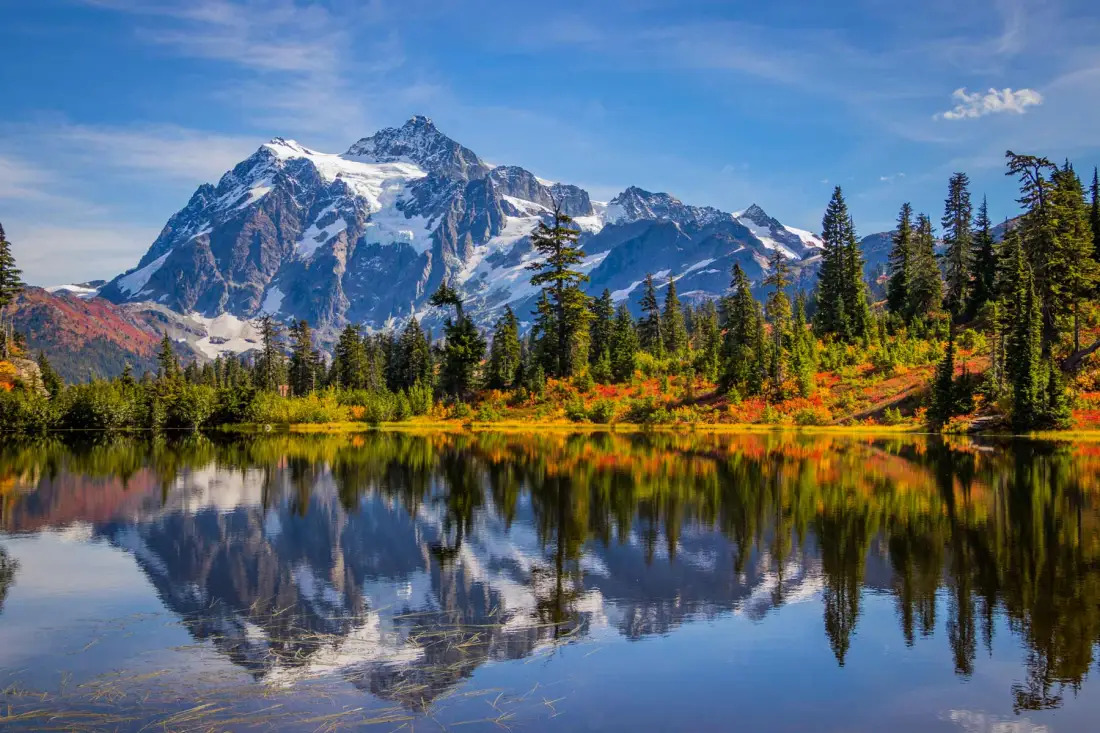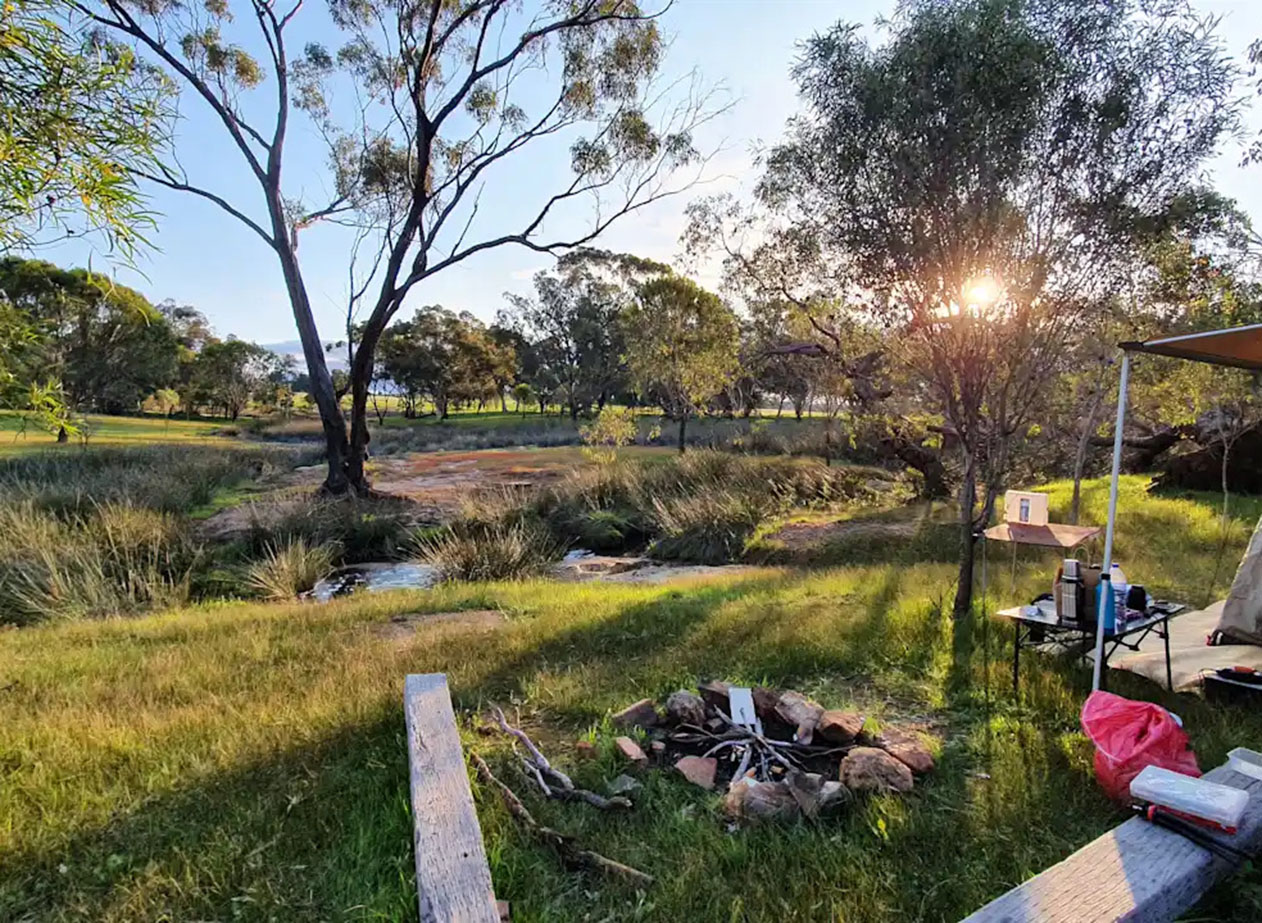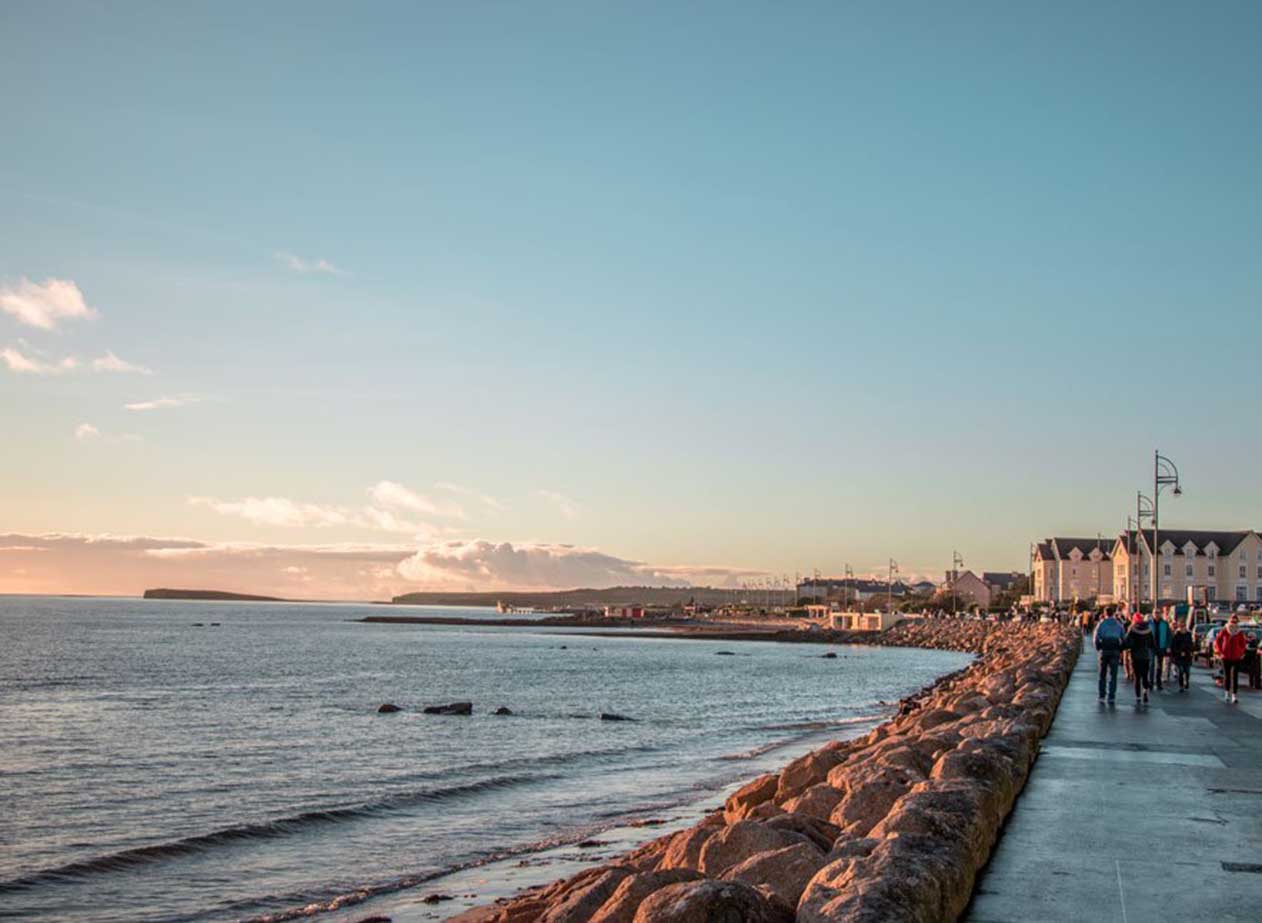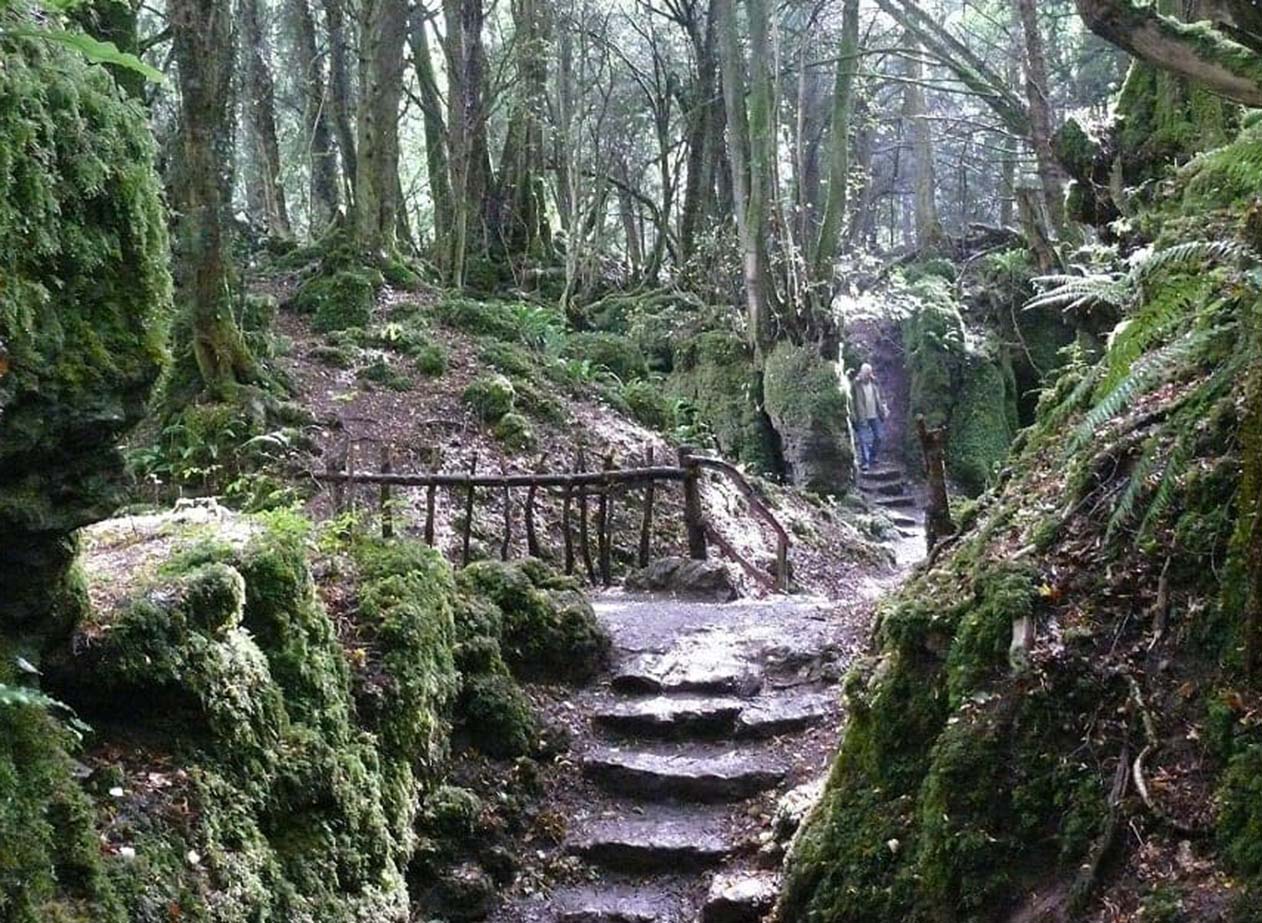Hello fellow travelers! I recently had the incredible opportunity to visit North Cascades National Park, and I’m excited to share my adventures with you. Nestled in the pristine wilderness of Washington State, this park offers a myriad of outdoor activities that will leave you in awe of its natural beauty. Join me as I take you on a journey through 15 epic activities in this magnificent park.
Park Overview:
North Cascades National Park is a pristine wilderness, celebrated for its rugged mountain ranges, dense old-growth forests, and a multitude of cascading waterfalls. Encompassing over 500,000 acres, this park offers a haven for hikers, climbers, and all who revel in the great outdoors. It is an integral part of the North Cascades Complex, a trio of interconnected natural wonders, which also includes the scenic Ross Lake and Lake Chelan National Recreation Areas
How to Get There:
To embark on your adventure to North Cascades National Park, consider the following routes and key attractions:
- From Seattle: Start your journey in the bustling city of Seattle, located approximately 120 miles to the west. The drive to North Cascades National Park is a scenic marvel in itself. Depart from Seattle, and head north on Interstate 5. After about an hour, take State Route 530 east, leading you through the charming town of Arlington. As you continue, you’ll pass the picturesque Skagit River, and soon you’ll arrive in the quaint village of Darrington, which serves as a great pit stop for a quick meal. From Darrington, continue east on State Route 530, as it transforms into the North Cascades Highway (Highway 20). This route will guide you through the heart of the park, unveiling breathtaking landscapes and access to several remarkable points of interest.
Key Attractions on Your Journey:
- Concrete, Washington: A small town along the way, Concrete is home to the Concrete Heritage Museum, where you can learn about the area’s history.
- Gorge Dam: As you journey further, you’ll encounter the picturesque Gorge Dam, set against a backdrop of emerald waters and lush greenery.
- Newhalem: Just beyond Gorge Dam is the charming town of Newhalem, the main entrance to North Cascades National Park. Stop here to stock up on supplies and pick up a park map from the visitor center. Nearby attractions include the Newhalem Creek Campground and Ladder Creek Falls Trail.
- Diablo Lake: Continue your drive, and you’ll reach Diablo Lake Vista Point, a mesmerizing spot known for its stunning turquoise waters and incredible mountain vistas. The overlook offers breathtaking photo opportunities.
- Washington Pass Overlook: As you proceed east, the road winds through mountainous terrain, eventually leading you to the Washington Pass Overlook. This vantage point provides awe-inspiring views of the rugged peaks and jagged cliffs that define the North Cascades.
By following this route, you’ll not only experience the joy of the journey but also have the opportunity to savor the natural beauty and diverse landscapes that North Cascades National Park has to offer. It’s a memorable adventure that begins the moment you leave Seattle and continues through this remarkable park.
Exploring the Park:
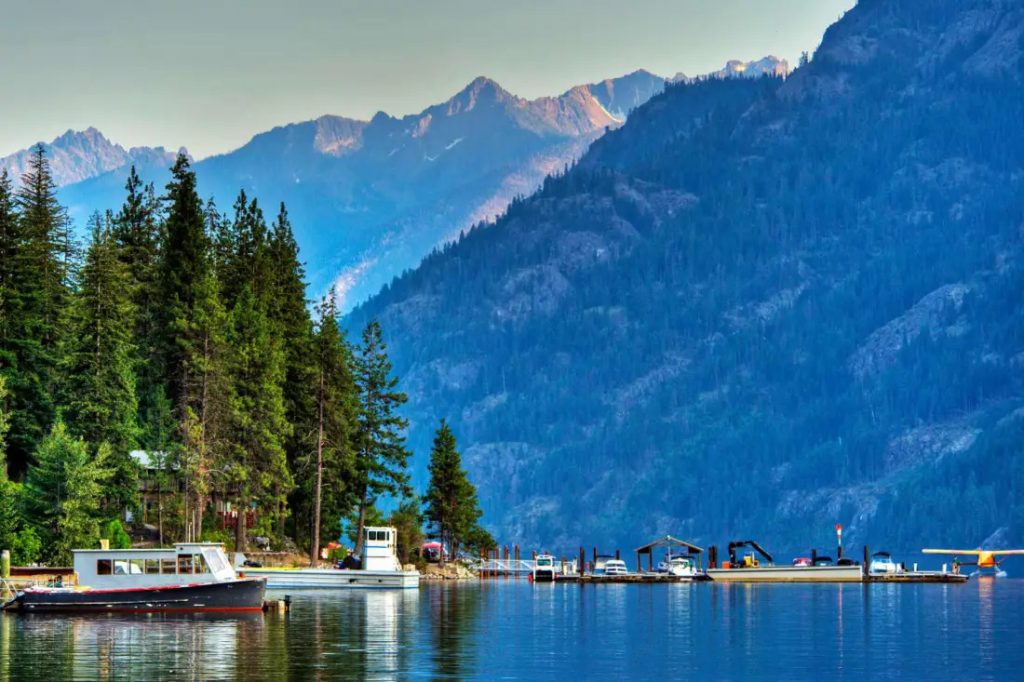
Hiking: North Cascades National Park is a hiker’s paradise with a plethora of trails to explore. Here are some essential tips for hikers:
- Be prepared: Before hitting the trail, check the weather forecast and ensure you have suitable clothing and gear, including sturdy hiking boots, water, and a backpack with essentials like a map, compass, and first-aid kit.
- Trail conditions: Keep in mind that some trails may be snow-covered or impassable early in the season, so inquire about current conditions at the visitor center.
- Leave no trace: Follow Leave No Trace principles by staying on designated trails, packing out all trash, and respecting wildlife and plants.
- Wilderness permits: If you plan to embark on overnight hikes, make sure to obtain the necessary wilderness permits, which are required for camping in the backcountry.
- Cascade Pass Trail: This iconic trail is a must-visit, offering spectacular views of the surrounding peaks and glaciers. However, it can be challenging, so assess your fitness and experience level before attempting it.
Climbing: For experienced climbers seeking the thrill of scaling North Cascades’ challenging peaks, safety is paramount. Consider the following when planning your climbing adventure:
- Skills and experience: Ensure you possess the necessary climbing skills and experience for the routes you intend to tackle.
- Equipment: Double-check your climbing gear, including ropes, harnesses, helmets, and protective gear.
- Permits: Some climbs require permits, so confirm the requirements in advance.
- Emergency preparedness: Have a detailed itinerary and inform someone of your plans. Carry communication devices, and know how to respond to emergencies.
- Mountain safety: Be aware of rapidly changing weather conditions and the potential for avalanches in certain areas. Always prioritize safety over summits.
- Mount Shuksan and Forbidden Peak: These are two renowned climbing destinations in the park, offering challenging ascents and breathtaking alpine scenery. Consult guidebooks and local experts for route details.
Wildlife Watching: Observing wildlife in their natural habitat is a thrilling experience, but remember to respect the animals and their environment:
- Keep your distance: Use binoculars or telephoto lenses for close-ups, and avoid approaching or disturbing animals.
- Quiet observation: Stay as quiet as possible to avoid scaring away wildlife, and don’t feed them.
- Safety first: In bear country, carry bear spray, make noise to alert bears to your presence, and secure food properly to prevent attracting them to your campsite.
- Birdwatching: The park is home to diverse bird species. Bring a field guide and binoculars to help with identification.
Boating: Enjoying the serene waters of Ross Lake or Diablo Lake is a fantastic way to experience the park’s beauty. Here are some considerations for boating and kayaking:
- Safety equipment: Ensure you have life jackets, a whistle, a paddle, and a spare paddle on board.
- Know the rules: Familiarize yourself with park rules and regulations regarding boating and fishing. Some areas may be off-limits to protect wildlife and their habitats.
- Lake conditions: Be aware of changing weather conditions that can lead to sudden and unpredictable waves.
- Leave no trace: When boating or kayaking, pack out all trash and avoid disturbing the pristine waters.
Exploring North Cascades National Park is a thrilling adventure, but it’s crucial to do so responsibly, respecting the environment and ensuring your safety and the safety of the wildlife you encounter. These guidelines will help you make the most of your outdoor experiences while preserving the park’s natural wonders.
Best Time to Visit:
The best time to visit North Cascades National Park is during the late spring through early fall, typically from May to September. Here’s why:
- Milder Weather: During this period, the weather is generally more temperate, making outdoor activities more enjoyable. The summer months offer comfortable temperatures, with daytime highs ranging from the 60s to 80s Fahrenheit (15-30°C), ideal for hiking and camping.
- Accessibility: Most park roads and trails are fully accessible, allowing you to explore a wide range of destinations without weather-related hindrances.
- Wildflowers: July and August are particularly enchanting months to visit due to the stunning wildflower displays. Meadows burst into a riot of colors, offering a visual spectacle that is not to be missed. This is a great time for photography and nature enthusiasts.
How Many Days to Spend:
The ideal duration of your visit to North Cascades National Park can vary depending on your interests and the activities you wish to engage in. Here are some considerations:
- Short Weekend Getaway: If you’re looking for a brief escape to enjoy the park’s beauty, a weekend trip is feasible. You can experience some of the main highlights in just two days.
- Extended Stay: For a more immersive experience, consider spending a week or more in the park. This will allow you to explore a wider range of trails, engage in various outdoor activities, and truly savor the park’s natural wonders.
- Recommended Stay: To strike a balance between experiencing the park’s highlights and getting a deeper sense of its beauty, I recommend dedicating at least 3-4 days to your visit. This provides enough time to explore some of the more remote and less-traveled areas, as well as indulge in longer hikes.
Park Map:
A park map is an invaluable tool for navigating North Cascades National Park. Here’s why it’s essential
- Trail Information: The map provides detailed information about the park’s trail system, including trail lengths, difficulty levels, and notable features. This helps you choose the most suitable routes for your interests and abilities.
- Attraction Locations: The map pinpoints the locations of key attractions, viewpoints, visitor centers, and campgrounds. It’s a helpful reference for planning your daily activities.
- Safety: Carrying a map ensures you won’t get lost in the park’s vast wilderness, and it can be a crucial safety tool, especially if you plan to explore backcountry areas.
When you arrive at the park, make it a priority to pick up a map at the visitor center. It will be your guide to making the most of your North Cascades adventure.
Notable Park Highlights:
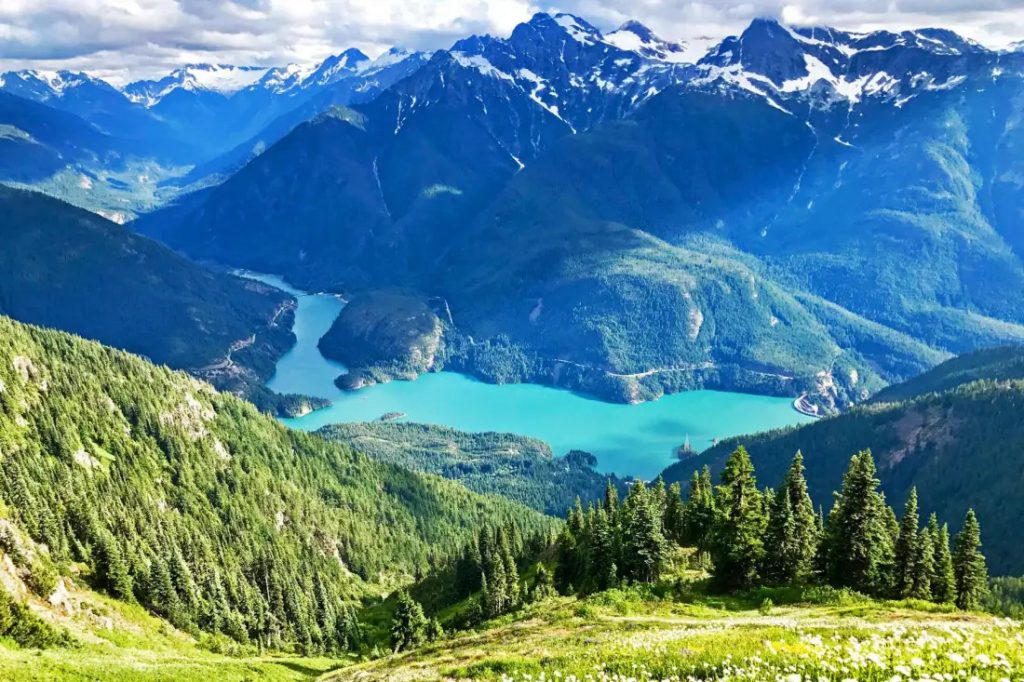
Diablo Lake Vista Point: A visit to Diablo Lake Vista Point is an absolute must. The vivid turquoise waters of Diablo Lake, surrounded by lush, emerald forests and towering mountains, create a scene of unparalleled beauty. The viewpoint offers ample photo opportunities, and the tranquil ambiance is perfect for relaxation and reflection.
Washington Pass Overlook: Prepare to be spellbound by the breathtaking views from Washington Pass Overlook. Here, you’ll gaze upon a rugged landscape dominated by dramatic peaks and jagged cliffs. As the sun casts its golden hues upon the terrain, it’s a prime spot for photography and simply soaking in the awe-inspiring natural beauty.
Where to Stay:
Camping: North Cascades National Park offers several campgrounds, providing a rustic and immersive outdoor experience. While camping is a fantastic way to connect with nature, it’s advisable to make reservations, especially during the peak season when campgrounds can fill up quickly. Popular campgrounds include Newhalem Creek Campground and Colonial Creek Campground.
Lodges: If you prefer a more comfortable stay, you can opt for lodges within or near the park. The historic North Cascades National Park Lodge offers a rustic and cozy atmosphere, and its central location makes it a great base for exploring the park. For a unique experience, consider staying at the Ross Lake Resort, a floating lodge accessible by boat and nestled on the shores of Ross Lake.
What to Pack:
Hiking Gear: When heading out on the park’s trails, ensure you have comfortable and sturdy hiking boots, weather-appropriate clothing, a backpack to carry your hiking essentials, and trekking poles for added stability on steep or uneven terrain.
Camping Equipment: If camping is on your agenda, bring along your tent, a sleeping bag suitable for the season, a sleeping pad for comfort, and cooking gear if you plan to prepare your meals in the backcountry.
Binoculars and Camera: Don’t forget to pack binoculars and a camera to capture the incredible wildlife and the scenic vistas that North Cascades National Park offers. From majestic mountain landscapes to close-up shots of birds and animals, you’ll want to document your memorable experiences.
Tips for Visiting North Cascades:
Be Prepared: The weather in North Cascades can change rapidly, so always be prepared for varying conditions. Dress in layers, bring rain gear, and have extra food and water. Let someone know your itinerary and expected return time when heading into the backcountry.
Leave No Trace: While exploring this pristine wilderness, it’s essential to respect the park’s natural beauty. Follow Leave No Trace principles, which include staying on designated trails, packing out all trash, and minimizing your impact on the environment.
Check for Alerts: Before you venture out on your daily activities, it’s crucial to check for any trail or road closures or alerts on the park’s website. This will help you avoid any unexpected inconveniences during your visit.
Ranger Programs: Joining ranger-led programs is a fantastic way to enhance your visit. Rangers offer insights into the park’s history, ecology, and conservation efforts. These programs can deepen your appreciation for the park’s wonders and provide educational experiences for visitors of all ages.
With these tips and insights, your visit to North Cascades National Park will be enriched, ensuring a memorable and responsible exploration of this remarkable natural haven.
North Cascades National Park is a true wilderness escape that will leave you with unforgettable memories. The pristine landscapes, towering peaks, and stunning vistas make it a destination worth visiting for nature lovers and adventurers alike. So, pack your bags, lace up your hiking boots, and embark on a journey through this epic national park. Happy travels!
